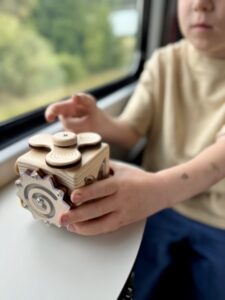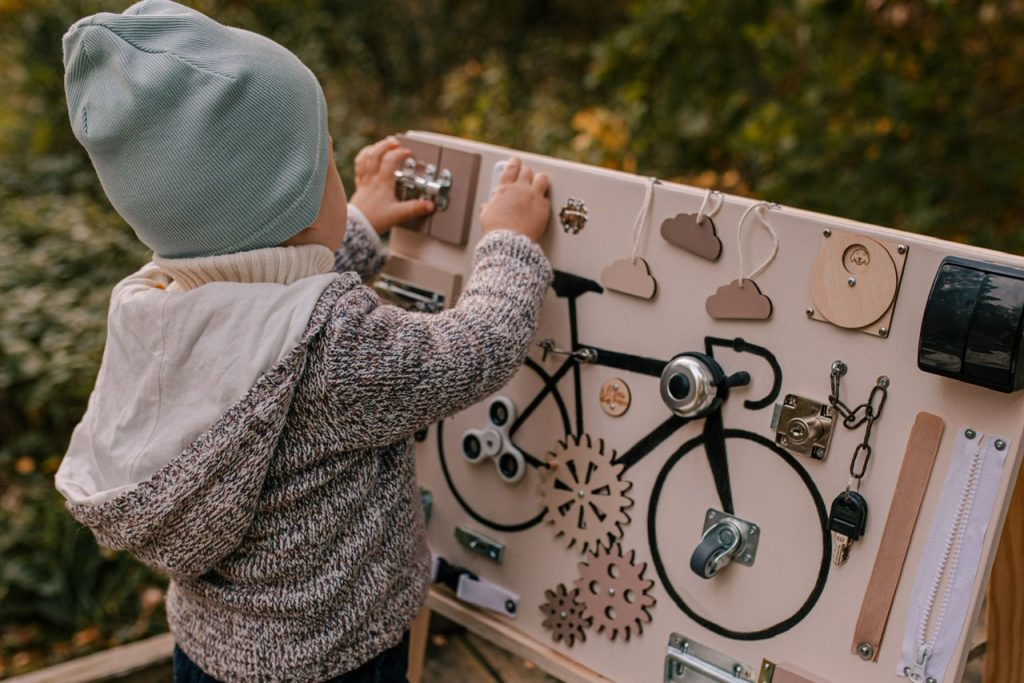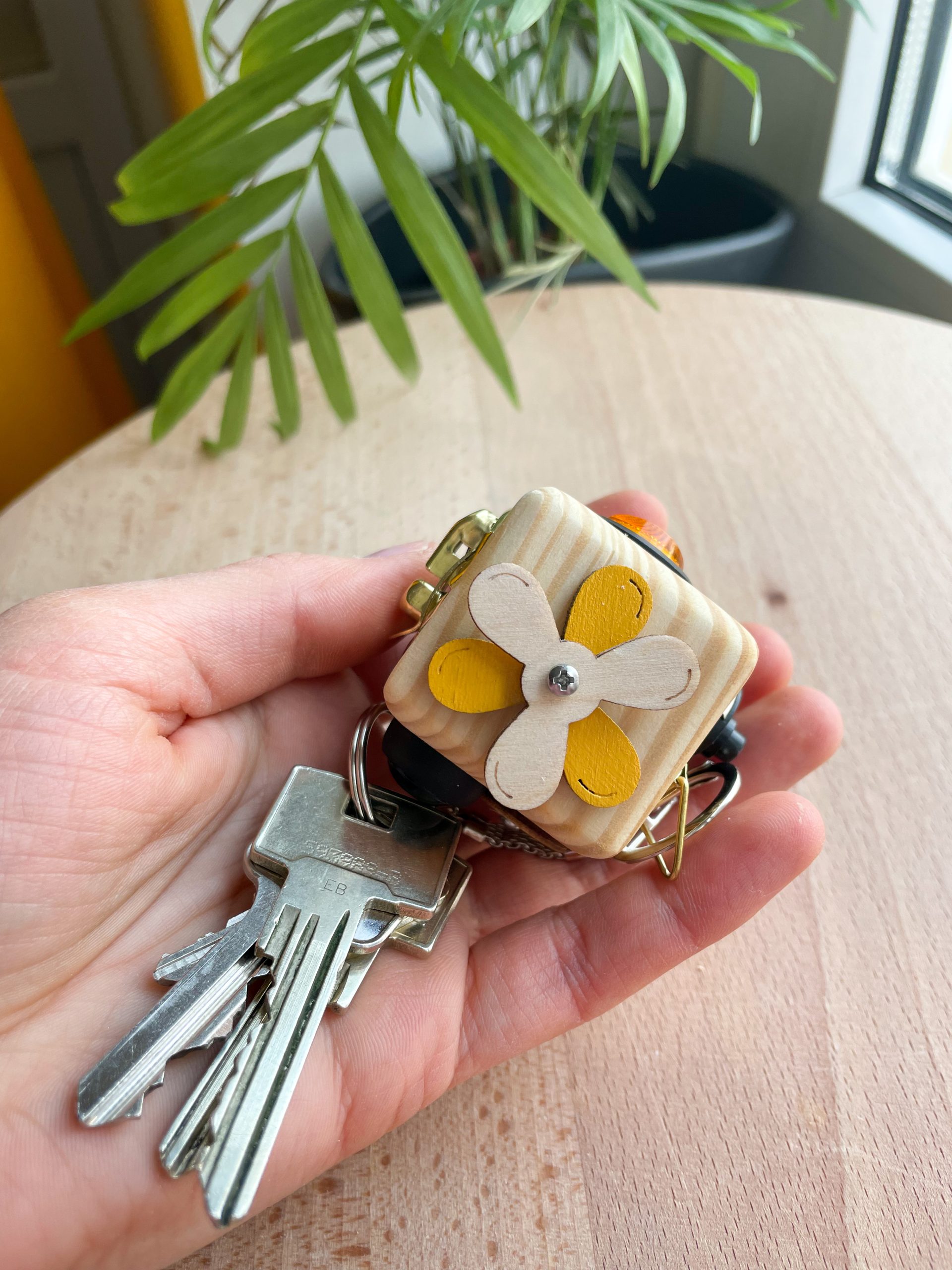
Toys for the airplane – what will occupy the child during the trip?
Traveling with a child is a challenge, especially on an airplane, where space is limited

The manipulative board is an extremely versatile tool that is widely used in the development of children, both in the context of play and learning. It is an item that engages a child’s senses and encourages exploration and interaction. In this article, we will take a closer look at what exactly a manipulative board is, what types of boards there are, and what benefits it can bring to the development process of little explorers.
A manipulative whiteboard is an extremely versatile tool that provides an interactive surface, most often made of a variety of materials, such as wood, plastic or fabric. Its surface features varied textures and textures, which encourages children to explore their senses through touch. Children can manipulate various elements placed on the board, such as pressing, turning, sorting or arranging, which promotes the development of manual skills. In addition, the manipulative board is an excellent tool for stimulating a child’s cognitive abilities through interactive play that engages imagination and creativity.
The manipulative board is an indispensable tool in the process of stimulating a child’s senses and developing his manual skills and hand-eye coordination. By interacting with a variety of elements placed on the board, the child can experiment, press, move or rotate, which promotes the development of precision hand movements and tactile awareness. In addition, the manipulative board encourages children to discover new textures, shapes and sounds, which stimulates their curiosity about the world and develops creativity through active play. It’s also an excellent form of sensory integration therapy to support a child’s harmonious development.
Sensory manipulative boards are specially designed surfaces that focus on stimulating a child’s senses through a variety of sensory stimuli. Using a variety of textures, colors, sounds and smells, these types of boards stimulate all of a toddler’s senses. The child can explore a variety of tactile materials, recognize differences in textures, respond to different colors and sounds, which promotes his sensory experience of the world. Sensory manipulation boards are an excellent tool for sensory integration therapy and everyday play, allowing children to develop their cognitive abilities and grow through interaction with their environment.
Educational manipulative boards are tools designed to develop a child’s cognitive skills through interactive play and exploration. Equipped with a variety of elements, such as letters, numbers, shapes and colorful pictures, they allow the child to learn through active activities. By manipulating these elements, the toddler can develop skills in recognizing letters and numbers, assigning colors, identifying shapes and developing logical thinking skills. Thus, educational manipulative boards are not only an excellent form of play, but also an effective tool to support a child’s learning processes.
Therapeutic manipulative boards are important in therapy, especially in the context of sensory integration therapy. They are used to support children’s development by stimulating various senses, developing social, emotional and physical skills. With a variety of elements, such as textures, colors, sounds or shapes, therapeutic manipulative boards allow therapeutic activities to improve a child’s functioning in everyday life. They are an effective tool that allows therapists to tailor therapy to each child’s individual needs.

Playing with the manipulative board is not only a source of entertainment, but also an important way to develop all the child’s senses. By interacting with a variety of textures, colors, sounds and smells, the toddler has the opportunity to stimulate his touch, sight, hearing, taste and smell. By touching different parts of the board, the child learns about the differences in textures and temperatures, while observing light and sound effects. In addition, manipulative boards can include elements that stimulate the sense of smell and taste, for example, by placing scented and flavored materials on them. In this way, play becomes a multifaceted sensory experience that promotes the child’s complex development.
Manipulating various items on the manipulative board is an excellent way to develop children’s manual skills. By grasping, moving, arranging and manipulating objects, toddlers improve their precision of movement and eye-hand coordination. Practicing different grasps, such as finger grasp and palm grasp, also promotes strengthening of hand and finger muscles, which is important for later development of manual skills, such as writing. Thus, the manipulative board is not only a source of fun, but also a platform for actively developing children’s manual skills and motor coordination.
The manipulative boards are an excellent tool for learning letters, numbers, shapes and other concepts through interactive and engaging play. Children can explore various elements on the board, arranging letters into words, counting colored blocks, matching shapes to the correct holes and much more. Such activities not only teach, but also engage the senses and develop the child’s cognitive abilities. With manipulative boards, learning becomes fun and attractive, which promotes faster learning for the toddler.
The choice of a suitable manipulative board should take into account the age and skills of the child. For young children, boards with materials of different textures, shapes and colors will work best. Such boards stimulate the senses and develop small motor skills. Older children can use manipulative boards that contain educational elements, such as letters, numbers, and shapes. This will support the learning of basic concepts. It is important to tailor the board to the child’s needs and interests in order to stimulate his development in the most appropriate and effective way.
When choosing a manipulative board for a child, it is important to take into account the child’s interests and preferences. Choosing the right board to suit his preferences can encourage longer and more engaged play. A variety of manipulative boards are available on the market, from those with interactive elements to those focused on developing specific skills, such as learning letters or numbers. A carefully selected board will not only interest the child, but also promote his development through engaging and rewarding play.
Before buying a manipulative board, it is worth checking that it is reasonably safe for the child. Make sure it does not contain small parts that can easily fall off and be swallowed by a toddler. The components of the board should be firmly fixed to avoid the risk of choking. In addition, it is advisable to choose boards made of non-toxic materials and free of sharp edges. Safety is a priority during play, so it is worth paying attention to these aspects when choosing a manipulative board for your child.
Playing with the manipulative board promotes sensory development, manual skills and the child’s learning process.
You can use the manipulative board daily or according to your child’s needs and preferences.
The manipulative boards can be safe for children, as long as they are appropriately selected for the child’s age and ability. They should not contain small parts that can pose a danger.

Traveling with a child is a challenge, especially on an airplane, where space is limited

Choosing the right gift for a 2-year-old boy can be a challenge, especially when you

In today’s busy world, more and more people are looking for ways to reduce stress
| Cookie | Duration | Description |
|---|---|---|
| cookielawinfo-checkbox-analytics | This cookie is set by GDPR Cookie Consent plugin. The cookie is used to store the user consent for the cookies in the category "Analytics". | |
| cookielawinfo-checkbox-functional | The cookie is set by GDPR cookie consent to record the user consent for the cookies in the category "Functional". | |
| cookielawinfo-checkbox-necessary | This cookie is set by GDPR Cookie Consent plugin. The cookies is used to store the user consent for the cookies in the category "Necessary". | |
| cookielawinfo-checkbox-others | This cookie is set by GDPR Cookie Consent plugin. The cookie is used to store the user consent for the cookies in the category "Other. | |
| cookielawinfo-checkbox-performance | This cookie is set by GDPR Cookie Consent plugin. The cookie is used to store the user consent for the cookies in the category "Performance". | |
| viewed_cookie_policy | The cookie is set by the GDPR Cookie Consent plugin and is used to store whether or not a user has consented to the use of cookies. It does not store any personal data. |